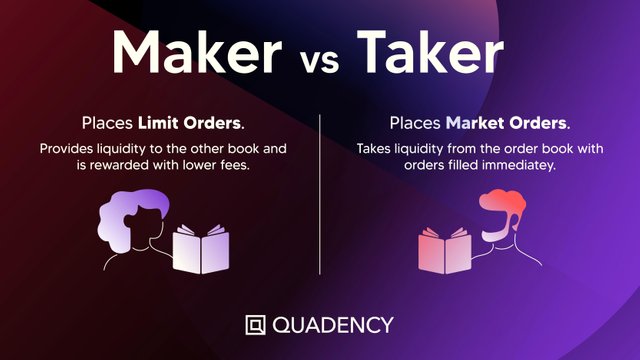Finding the lowest trading fees can be hard, especially when rates can vary so much from one exchange to another based on a number of factors.
In this article, we not only explain how cryptocurrency exchange fees work but will also make sure you know how to find the lowest fees in the industry!

Tips to Lower your Trading Fees
- Use Quadency's handy Fee Comparison Tool
- Hold native platform tokens for discounts, i.e. QUAD, BNB or FTT
- Look for opportunities to earn to offset fees, i.e. staking
Exchange fees explained
Fees are simply your transaction costs when using the various services an exchange offers. While fees can vary a great deal across platforms, they usually share the same common categories:
- Deposit and withdrawal fees may apply when you add or remove funds
- Trading fees may apply whenever a trade, buy or sell is made
- Additional services, like Defi lending or margin trading, have their own fees
The most common is the trading fee, which applies to most transactions.
How trading fees work
A trading fee is a percentage of each trade that can be charged automatically when a buy, sell, or trade is executed. Whether you trade once in a while or automate high-frequency trading, the speed and ease of the trade often drive the price you pay. For example, a quick buy on Coinbase with no order book to navigate comes with a higher transaction cost than placing a trade on Coinbase Pro but is less than buying crypto with a credit card.
When trading on spot markets, it all comes down to your Maker and Taker fees.

- “Maker fees” are generally lower when a trade is not immediately executed, because a standing limit order to buy or sell contributes to (i.e. MAKES) an exchange’s order book by adding liquidity.
- “Taker fees” are generally higher and charged when an order is immediately executed, as it reduces (i.e. TAKES) order book depth by lowering liquidity.
How to find the lowest crypto trading fees
Most exchanges make their fees available to the public, although some may be more complex than others (i.e. derivatives exchanges) or changed often, so it can be hard to stay up to date. While their fee structures are similar, their rates can vary so you should always DYOR to find the best deal.
The easiest way to compare exchange fees according to your needs is Quadency's new fee comparison tool - give it a try!
One way to lower your fees, even more, is by using a native platform token for discounts, if available. Otherwise, you're mainly limited to trading higher volumes to achieve higher discounts.
Fortunately, Quadency Exchange will soon enable trading at better prices across leading CEX and DEX platforms, all with lower fees thanks to the QUAD Token.
Conclusion
Crypto exchanges are quickly evolving in their offerings and complexity, so remember these quick tips to find the best trading fees in crypto:
- Check Quadency's Fee Comparison Tool regularly as we add new exchanges and markets
- Look for native exchange tokens like QUAD to get discounts
- Find ways to earn to offset trading fees when available
- Quadency is a cryptocurrency portfolio management platform that aggregates digital asset exchanges into one easy-to-use interface for traders and investors of all skill levels. Users access simplified automated bot strategies and a 360 portfolio view with a free account.
Disclaimer: The content of this article is for general market education and commentary and are not intended to serve as financial, investment, or any other type of advice.